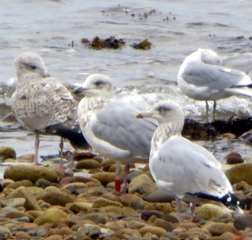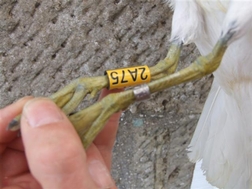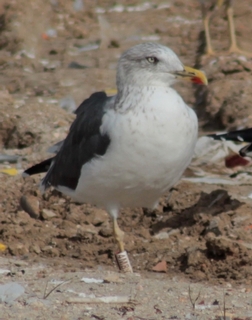Gull Colour Ringing Project



To most of us, gulls are synonymous with the coast and are colloquially called “seagulls”. Love them or loathe them, the coast would not be the same without their familiar cries.
Starting in 2013 researchers from Glasgow University have been studying Herring Gulls here in the Firth of Clyde. Three islands have been selected in the Clyde which have breeding gulleries, Horse Island, Lady Island and Pladda here off the south end of Arran.
In general, gull populations have been declining and to understand aspects of this decline the researchers are looking at breeding success and adult gull foraging behaviour to see how the two are related.
In 2014, six adult Herring Gulls on Pladda were fitted with data-loggers - small, light electronic devices which are powered by mini solar panels. These devices record the movements of the gulls during their foraging trips. The information from the data-logger is relayed to a receiver unit which downloads the bird’s movements, although the birds have to be within 1km of the receiver for the data to be down-loaded. The map below shows the movement of one gull between July 2014 and June 2015.
In addition, over 40 adult and juvenile Herring Gulls and 27 adult and juvenile Common Gulls were fitted with unique colour rings allowing them to be individually identified without having to be caught again. These rings are marked with letters and numbers which can be easily read using binoculars or a telescope (see photograph above). It is hoped that sightings from these rings will show where both adults and juveniles spend their winters.
Running in conjunction with this study, five adult and thirty-fve juvenile Lesser Black-back Gulls have been colour ringed. It is hoped to trace their movements both to and from their wintering grounds but also to locate their wintering sites in the Mediterranean and North Africa. The photo on the right above was taken of a Clyde ringed bird in Madrid!
It is hoped to continue these colour ringing projects over the next few years to get a more comprehensive insight into the movements of our gulls here on Arran and the surrounding Firth of Clyde.
So the next time you come across a group of gulls, give them an extra look and see if you can spot and read a colour ringed bird. All sightings of colour ringed gulls are welcome even of birds that seem to be resident in that area. Please forward all sightings of colur ringed gulls to Terry Southall.
Email address terrysouthall789@btinternet.com
